Amami Oshima island?
Amami Oshima is not only one island, but also includes the remote island around Amami Oshima.
All these islands are called Amami Oshima Islands.
The largest island is Amami Oshima main island.
Next, there is Kakeroma island in just south of Amami Oshima main island.
There are Uke island and Yoro island in the south of Kakeroma island.
These are inhabited islands.
Although there are other desert islands around there, we call the 4 inhabited islands including the surrounding desert islands Amami Oshima islands.
Furthermore, Kikaijima is located just northeast of Amami,
and Tokunoshima, Okinoerabujima, and Yoronjima (Kagoshima Prefecture up to Yoronjima) are located to the south, and the main island of Okinawa is to the south.
Generally speaking, it has a circumference of 460 km and an area of 712 square kilometers.
Amami Oshima is the second largest to Sado Island among the remote islands of Japan, except for the main island of Okinawa.Second largest island That’s right.
Amami’s administrative divisions are five municipalities, “Amami City, Tatsugo Town, Yamato Village, Uken Village, Setouchi Town” from north to south.
About 60,000 people live in Amami Oshima.
Amami AirportIn the northern part of the country, there are rolling hills, and the flat terrain is used for active agriculture.
Many sugar cane fields can be seen along the road heading south from Amami Airport.
The area south of the central part is surrounded by deep mountains, and the plain extends slightly to the foot of the mountain.
And there, small villages are scattered.
In the central and southern regions, there are more mountains than in the northern regions, so it rains more and is suitable for growing fruit trees. Especially in recent years, Amami’s 「Tankan (oranges)」 has a good reputation for its good taste.
Other specialties include plums, passion fruit, guava, and mango.
Further south, in Setouchi Town, the aquaculture industry (pearls, bluefin tuna, etc.) using the complex coves of the Oshima Strait is flourishing.
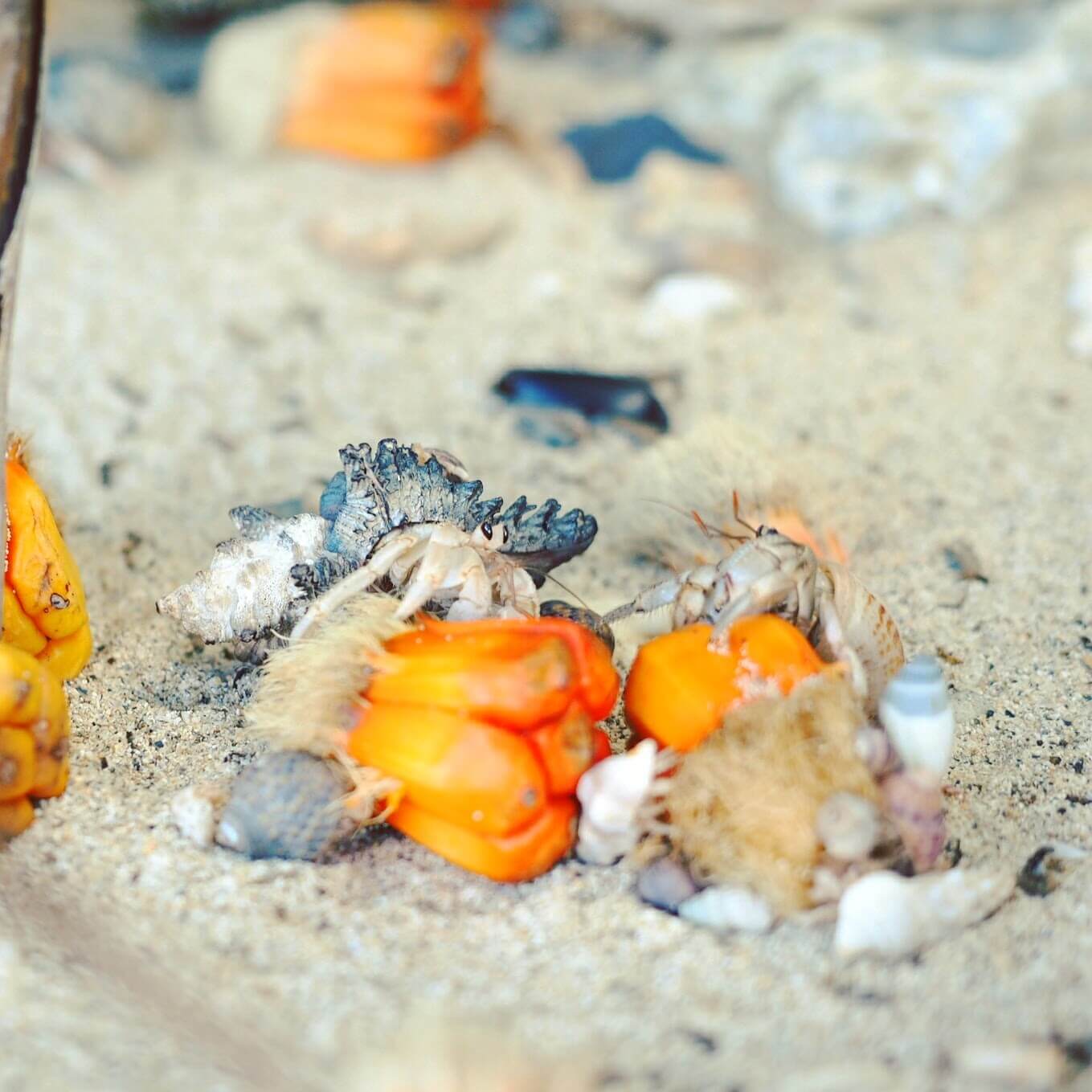
Amami is a warm Island.
Amami is a warm island with the average temperature 21 degrees C. in the subtropical climate.
In summer 33.34 degrees C. , or about 35 degrees C. at the highest.
Kumaya in Saitama Prefecture and Tajimi in Gifu Prefecture in Honshu, are famous for the highest record of temperature of over 40 degrees C.,
which is impossible in Amami.
In the nationwide weather forecast in summer, rather cooler days than in Honshu, are reported.
Why is it so? Because it is an island surrounded by the ocean. It never gets hot!
Big cities have so-called heat island phenomena caused by air conditioning.
The island has no relation to them.
The island is rather cooler than the big cities.
Living in Amami Oshima is the small consumption and expenditure on clothes and heating in winter.
On the contrary, higher in price is the expenditure of gasoline and transportation!
The temperature itself does not go up so much. But the sunlight is so strong.
One hour exposure to direct sunlight often causes sunburn.
The islanders are accustomed to it, but be careful of too-much of it.
On the contrary, it gets unexpectedly cold, because the wind blows strongly from the north.
But in the daytime in winter it is comparatively warm.
Sometimes the strong wind blows from the north. On windy and rainy days, the temperature gets to 3-5 degrees C. It is very cold.
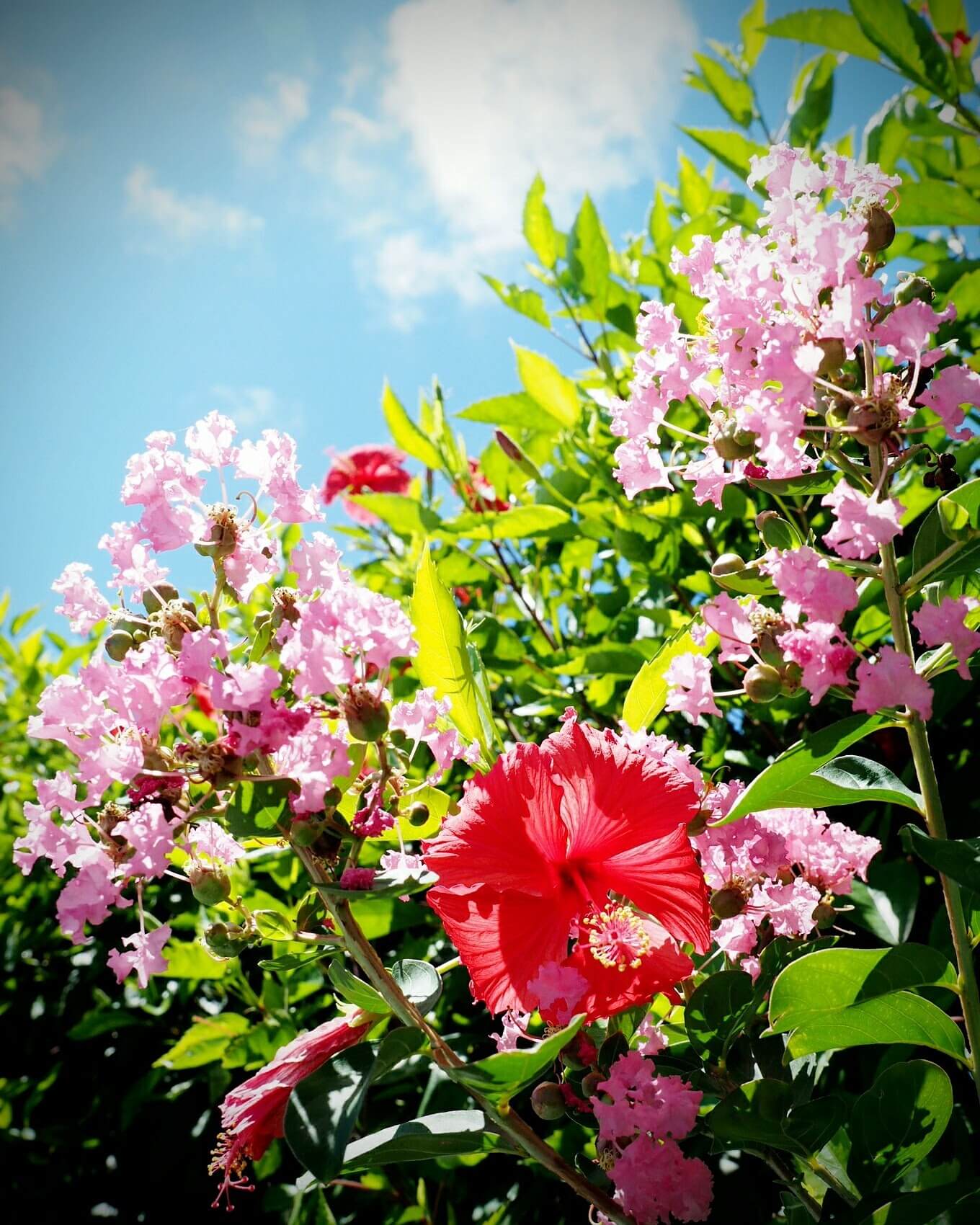
Let’s go to the ocean in Amami!
Amami Oshima, the summer island, reminds us of a sea!
The corals surround the island and foster the fullness and blessing of the ocean around this island..
The sea average temperature is 24 degrees C.
How warm it is!
The average temperature in May-to-October is 27 degrees C. and that in November-to April 24 .
The year’s average temperature is 24 degrees. There is no change!
In winter the ocean is warm.
When the ocean is mentioned, swimming matters. When swimmig is mentioned, do matter the beautiful white beaches on the island!
Almost of all the beaches are white sand of coral and shells, although there are some beaches with black sands.
Wherever you go, there are the beaches, without any human being found swimming on the beach!
It does not mean that swimming is prohibited. At any rate, almost no human being is found.
The large summer beaches are usually crowded with the children enjoying the summer vacation.
But it is until the middle of the summer vacation. The beaches are basically private beaches.
We can swim from May to October as noted above.
You can enjoy swimming for quite a long time. You can swim all the year long with wetsuits.
Diving is, off-course, a chance for you to meet the beautiful tropical fishes
and to enjoy snorkeling light-heartedly and satisfyingly.
It is a little difficult from November to April. But from May to October, please come to say Hello and take a look into the ocean,
which will give you a chance to meet the fishes.
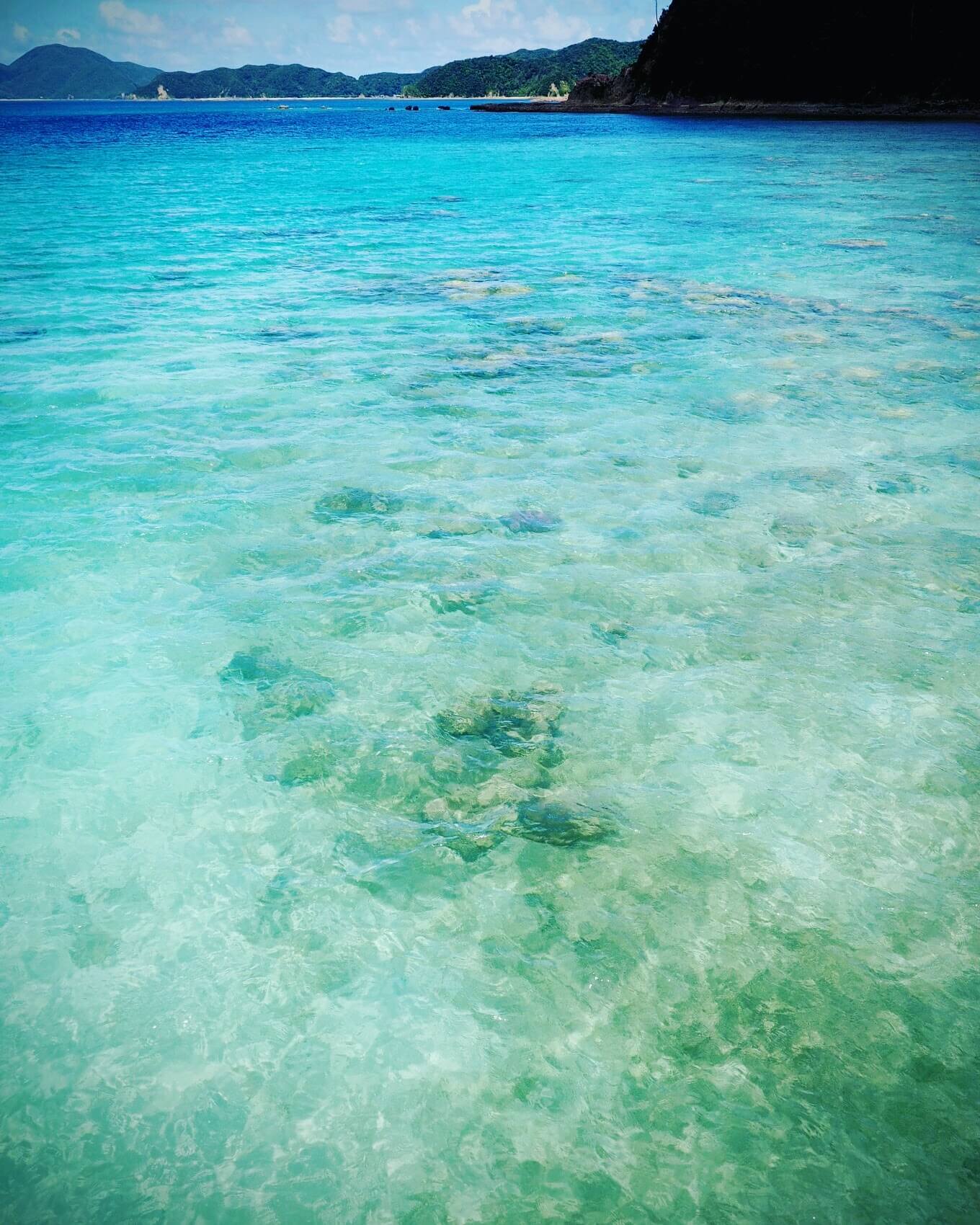
Let’s go to the mountains in Amami!
What the visitors talk about Amami is the depth and richness of the mountains.
The highest mountain in Amami is Mt. Yuwan (694 meters high).
Mt. Yuwan in Amami, which is less than 700 meters high, is said to be the highest of the southwest islands.
The mountains. occupy 80 percent of the island.
The most dangerous snakes, Habu snakes, live in the mountains in Amami!
Thoughtlessly you cannot enter the forest or bushes in Amami..
You rarely encounter a habu when you live normally in town,
but you have to be careful when you step into a bush.
To live in Amami, we must not forget the existence of the habu snakes.
Please keep this in the back of your head!
However, even those who live in Nase or in Koniya rarely come
across the Habu Snakes.
It is a fact that the Hubu Snakes cause danger to lives.
It is said that it has been a natural field guardian god of this rich nature.
The Hubu Snakes have been preventing people from getting close to the mountains.
That is why the present nature remains.
Amami Rabbits, National Designation Special Natural Monument, and Lidth’s jay(Luli-kakesu),
endemic birds in Amami, inhabit the mountains in abundance of nature where the Hubu Snakes have been kept intact, A lot of precious wild animals are breathing.
So are the precious plants!
In Amami, there exist vegetations named ooo amami, the species endemic to Amami.
We would like to inherit the nature full of endemic species growing here in Amami and pass it down through the ages to the next generations.
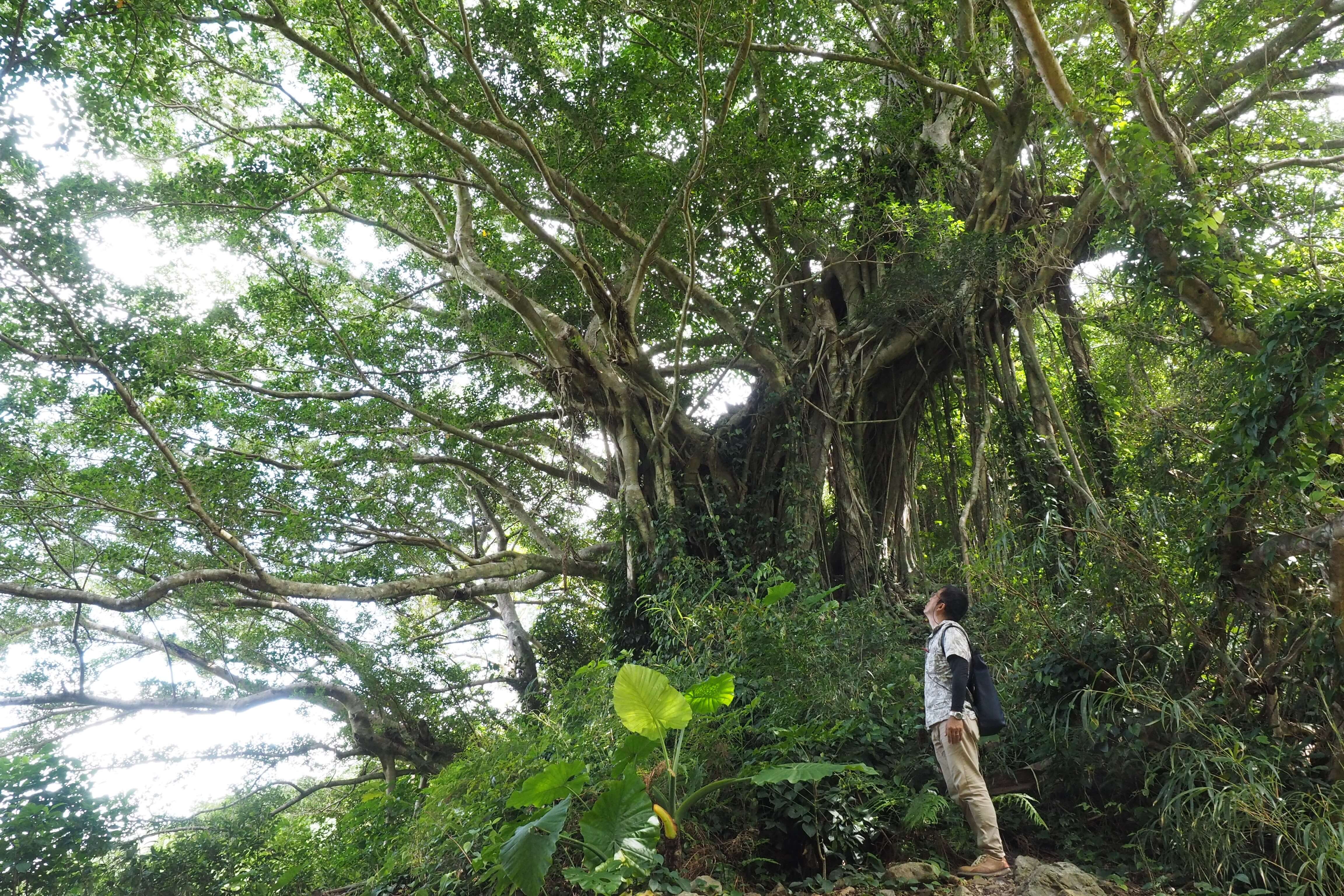
Let’s go to the Mangroves in Amami.
The earth is called a water planet.
The rain falls down from the sky, pours into the mountains, and makes up a valley. A small stream becomes a river, and flows into the ocean.
The sea water evaporates up into the sky, becomes the clouds, and again comes down onto the earth.
The rain falling down on the mountains does not only gather into the rivers but also flows into the ocean, being absorbed and stored in the mountains, and oozing out little by little.
The abundant nutrition in the forests then flows together into the rivers and the oceans.
It provides the mangroves and sea animals with the nutrition.
In the rivers in Amami, there live precious fish named Ryukyu Ayu
that are subspecies a little different from Ayu that inhabit Honshu.
The rich nature in Amanmi, the rivers and mangroves full of nutrition have been contributing to the survival of these precious species.
The water travelling along the rivers will reach the mangroves.
In the mangroves, do propagate the precious animals and plants,
such as Black mangrove (Ohirugi), Kandelia candel(Mehilugi), and looking-glass tree (Sakishimasuounoki),
Huge crabs, Nokogirigazami, and palm sized Shijimi are abundant rare animals.
The abundant inhibition of the rare animals is thanks to the nutrition in the water from the rivers,
The nature in Amami has been protected in the everlasting recycle.
We aspire that this rich nature be kept preserved permanently!
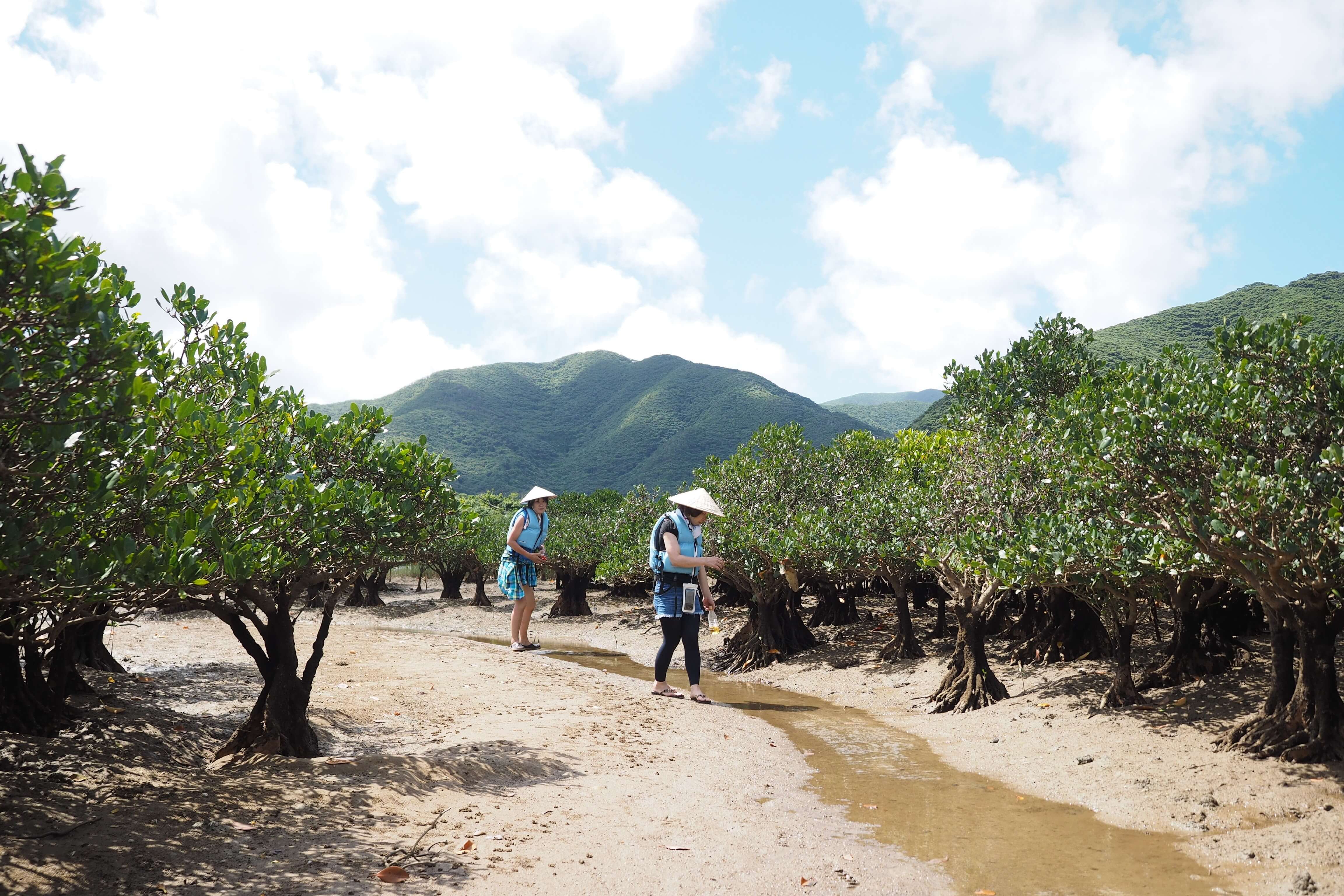
We wish that those who have read our homepages be encouraged to visit us,
“Let’s go to Amami !!“
We appreciate Your consideration of Amami Tours.
We are looking forward to hearing back from you !
